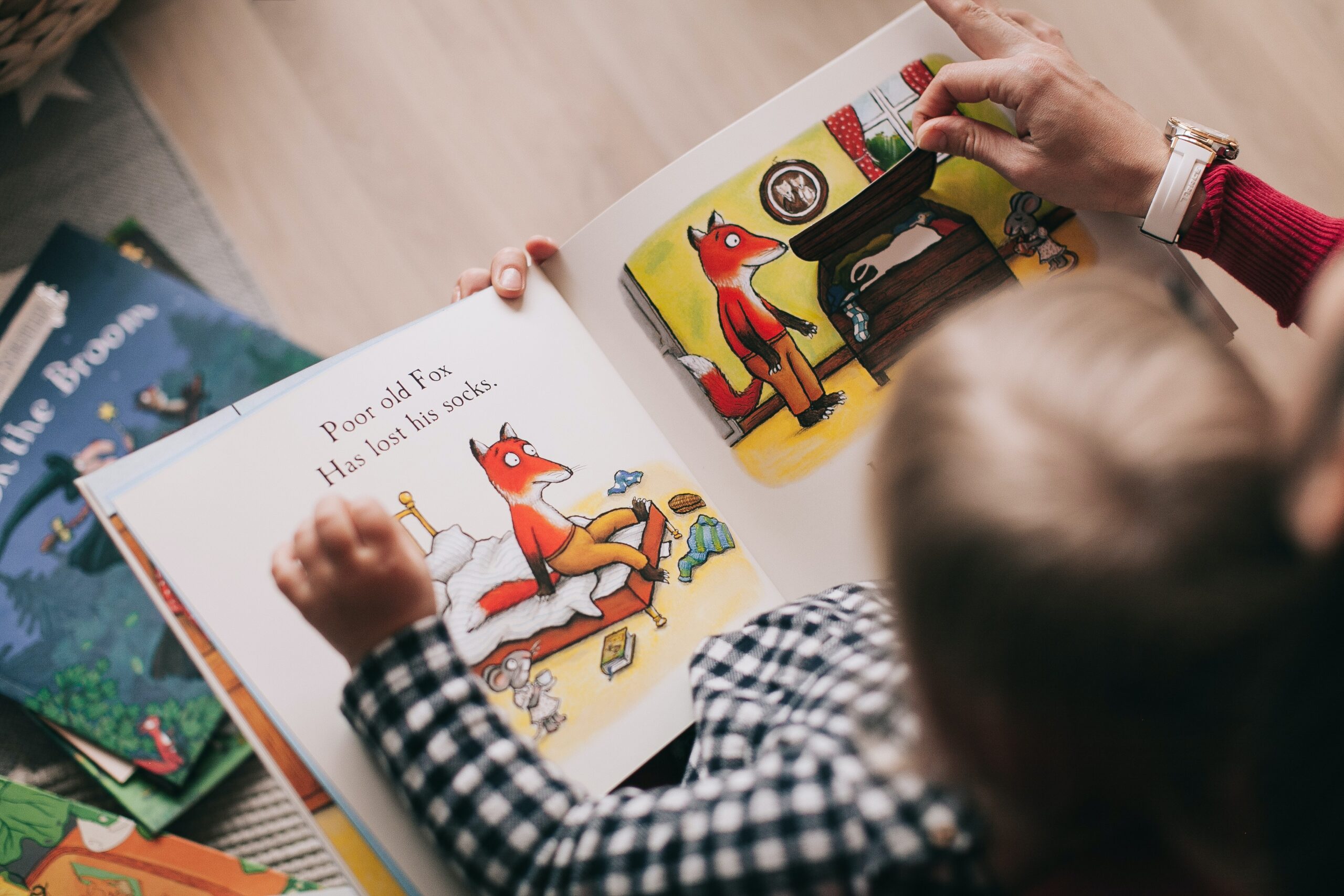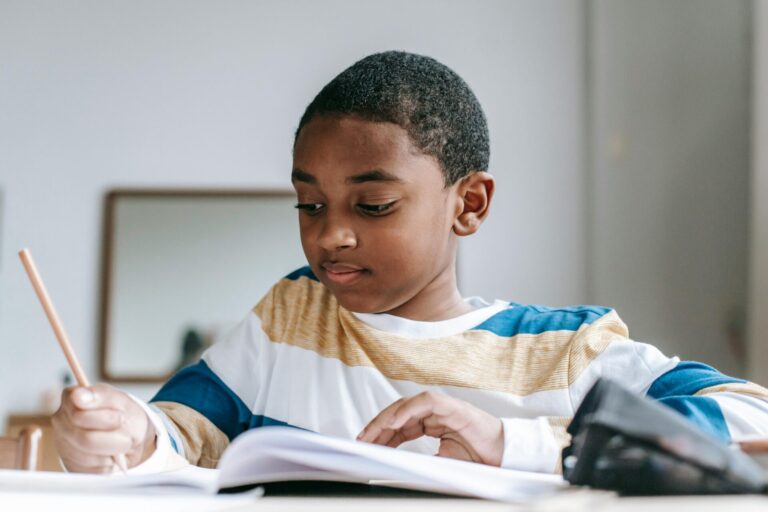Parents across the country – whether they’ve chosen to do virtual learning, home schooling, or a hybrid of formats – are stressing about just how effective learning from home will be. This is particularly true for parents of children in early elementary school, who are faced with the daunting task of teaching their little one to read. Before you spiral into anxiety and worry that your child may never figure it out (psssst, they will!), read these tips from teachers who, all together, have taught thousands of children to read. With these pieces of wisdom, and plenty of patience, your child will be cruising through chapter books in no time.
Spoiler alert: Every single teacher I spoke with stressed how important it is to read out loud with your child as often as possible. If you take one main tip away from this, make it that!
It almost sounds too easy, but make it a priority to read to and with your child. Mimic what it looks like to read with expression, make silly voices, show emotion, etc. When you’re reading, have meaningful conversations about why characters may act a certain way or how the illustrations help tell the story. It’s important to have kids fall in love with reading! It will make it easier for everyone.
–Meredith Harshbarger, First Grade Teacher
As far as phonics goes, start with basic sounding out (3 letter words, then 4 letters, practice consonant blends (sl, bl, sk, etc.)
–Meredith Harshbarger, First Grade Teacher
Incorporate word games, nursery rhymes, DIY flash cards, an abundance of learning-to-read books (Dr. Seuss was my personal fave).
– Eric Ellis, Graduate Assistant at the Butler University Writers’ Studio
Pay attention to how the child learns best. I think lots of teachers and parents get hung up on doing it ‘the right way’ when the only right way is one that engages the child and makes reading fun and desirable.
– Eric Ellis, Graduate Assistant at the Butler University Writers’ Studio
Find easy reader books at the library. There is a series of books that are “I Can Read” and leveled 1-4, so those level 1 books would be good for beginning readers.
– Joanna, Former First Grade Teacher
Make sure they have a mastery of identifying all letters and sounds. Then go with sight words. Check out Dolch Sight Words (Google!) that can give you lists. Basic sentences with repetition (‘I see the cat. I see the car. I see the…’) making sure to have pictures to utilize for figuring out unknown words. Then, from there it can be teaching short vowel word families, digraphs (sh, th, ch), then long vowel families. Teaching them when coming to an unknown word what does it start with, what word would make the most sense, using picture clues, or stretch the word out.”
– Joanna, Former First Grade Teacher
For pre-readers there’s a lot of activities they can do with sounds in words (phonemic awareness is the technical term) that actually set kids up to decode words. Rhyming, sounding words out, clapping syllables, blending sounds together, identifying the first or last sound in a word.
–Ellen Kilgore Harrison, 2nd Grade & K-4 SPED Teacher, Specializing in Children with Dyslexia, Autism, and ADHD
If your kid is starting to learn to read words, start in word families or words with the same endings like –at (cat, mat) –ig (pig, big). Start with consonant-vowel-consonant word and build up to silent e words like bike and words with blends like crab and trip. Kids can tap each sound on their fingers.
–Ellen Kilgore Harrison, 2nd Grade & K-4 SPED Teacher, Specializing in Dyslexia, Autism, and ADHD
Teach words that don’t follow the rules like was, from and have separately. And teach why they don’t follow the rules.
–Ellen Kilgore Harrison, 2nd Grade & K-4 SPED Teacher, Specializing in Dyslexia, Autism, and ADHD
Don’t be afraid of technology! There are lots of good book apps like Epic!, BrainPOP, and Word Wizard for spelling.
–Ellen Kilgore Harrison, 2nd Grade & K-4 SPED Teacher, Specializing in Dyslexia, Autism, and ADHD
First and foremost, make sure you have a variety of books at 3-4 levels. You never know how quickly a child will take off. Start with picture books, ABC, short sentence, short paragraph. Building as you go. If your child loves a particular book and reads it a thousand times, let them read it a thousand times. Find other books similar to encourage breadth.
– Giovanna Mandel, Former Third Grade Teacher
Kids love quirky, fun, silly, repetitive, and goofy. Recent suggestions to fill classrooms with nonfiction books is moronic. If you have a 3-4 year old who loves to plop down with a scientific journal, call MIT, that kid is a prodigy. For the rest of the kiddos, give them fun!
– Giovanna Mandel, Former Third Grade Teacher
Make books easily accessible. If your kiddo has a nightstand, put a couple of books there, have a few in the kitchen, the living room. Not the potty… I read that encourages kids to not get off the pot!
– Giovanna Mandel, Former Third Grade Teacher
For K/1: Have your children help you locate different letters, punctuation, and simple words on the pages of a book while you read to them. You can ask them: Do you see any capital letters? Can you point to a question mark? I see a word spelled “the.” Do you see that word? What does that word say? You can also have your children point out where sentences start and end.
–Charlotte Jay Parker, Kindergarten Teacher & Literacy Coach
For K/1: Ask questions while you read! Such as: Which character is your favorite? Why? Why do you think this character did this? Would you have done the same thing? Any questions to get them thinking and really comprehending the text.
–Charlotte Jay Parker, Kindergarten Teacher & Literacy Coach
Memorize sight words. Look up the 300 Fry Words. Generally my kindergarten students will learn from 75-100 words, and my first graders will get up to 300 words. Work on 5 words at a time!
–Charlotte Jay Parker, Kindergarten Teacher & Literacy Coach
Practice sounding out multisyllabic words – young readers often have a difficult time with that. Practice sound games like substituting different sounds in words and seeing what you come up with.
–Charlotte Jay Parker, Kindergarten Teacher & Literacy Coach
“I cannot stress how important it is for parents to continue reading to their children. You can have the students point to the words with you, but hearing someone read out loud really helps them understand sentence structure and hear what it should sound like when you are reading.
– Melissa Ruben, Staff Development Teacher, Former First & Third Grade Teacher
Practice sight words in lots of different ways! Rainbow write, writing them in chalk, writing them in shaving cream, cutting out magazine letters, etc. Just really manipulating the letters helps them to remember them.
– Melissa Ruben, Staff Development Teacher, Former First & Third Grade Teacher
Support phonemic awareness (sounds in words) as well as learning phonics (letters connected to sounds). Take a step back and think to yourself about how letters sound and how they often have multiple sounds (g can make two sounds – gum and germ). Point these things out to your kids.
– Hannah Robbins, Second Grade Teacher
Phonemic Awareness: It’s important that students know that words are made up of sounds. The word ‘cat’ is made up of three sounds or phonemes. The word ‘boat’ is also made up of three sounds, even though it has four letters, because the vowels are combined into one sound. Chunk words and ask questions like, “what is the last sound in cat?” “when I say /t/ /op/ what word does it make?”
– Hannah Robbins, Second Grade Teacher
Phonics: show kids a letter, or point to it in a book, and ask what sound it makes. [Example: letter ‘Aa’ makes /ae/ (or ay as in lay) AND /a/ (or ah as in at].
– Hannah Robbins, Second Grade Teacher
Use a multi-sensory approach – get kids moving as they practice letters and sounds. Create (or research/Google) dances and songs for different sounds. Have kids write letters in shaving cream and practice the matching sounds.
– Hannah Robbins, Second Grade Teacher
Keep it fun and engaging! Try new ways of reading and writing. Use whipped cream or shaving cream to write sight words or word patterns your child is practicing. Your child can write the word in the cream, read it, and then “erase” is by wiping it away.
– Lizzie Wagner, First Grade Teacher
Get out a whiteboard, marker, and an eraser. I taught 1st grade and my kids LOVED getting to write and erase on them. The colorful markers were always a crowd favorite, but any color will do. You can write out words that your child is working on (around 5-10 words or so depending on age) and when they read it aloud to you they can erase it. Or your can orally give your child a word to spell on the board. To boost engagement, provide them with a fly swatter. Write their words on the whiteboard and select a random word to read aloud. When your child finds it on the board they have to smack it with the fly swatter as fast as possible! Do this until all the words have been smacked.
– Lizzie Wagner, First Grade Teacher
Don’t give up! Your little one is just learning to read and you want their first encounters with literacy to be magical. Talk about your love for reading. Tell them which books you enjoy and why. Read them books that will spark their interest. Let them explore all kinds of genres. Show them that reading is cool.
– Lizzie Wagner, First Grade Teacher





